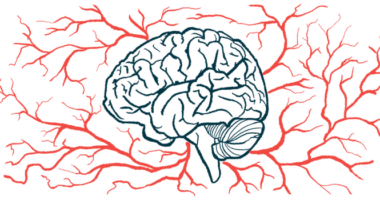Acupuncture May Alleviate Pain in Children and Adolescents with SCD, Study Suggests

Acupuncture may be a useful add-on therapy to help manage pain in children and adolescents who have sickle cell disease, a new study suggests.
The study, “Acupuncture for pain management in children with sickle cell disease,” was published in the journal Complementary Therapies in Medicine.
Episodes of acute pain are the main cause of hospitalization among patients with sickle cell disease. Many patients living with the disease also have chronic pain. Consequently, interventions and medications intended to curb pain are much-needed by those with sickle cell disease.
Opioids are part of the panel of standard medications normally used to alleviate pain in patients with sickle cell disease. However, this class of medications often has multiple undesirable side effects.
Acupuncture is a type of traditional Chinese medicine in which specific points of the body are stimulated by inserting very thin needles through the skin.
Previous studies have shown that acupuncture can be effective in a number of conditions associated with pain. However, the use of acupuncture to alleviate pain in patients with sickle cell disease has not been explored very much.
To address this issue, researchers from the George Washington University in Washington, D.C., in collaboration with colleagues at the Children’s National Medical Center, evaluated the experience of children and adolescents with sickle cell disease who received acupuncture as a treatment option to manage their pain.
The study included 12 patients — nine females (75%) and three males (25%), with an average age of 16.85 years — who received a total of 33 acupuncture sessions delivered by one of two licensed acupuncturists from 2016 to 2018.
From the 12 patients included in the study, 10 (83%) met the AAPT criteria of chronic pain in sickle cell disease. The back was the most common (60%) pain location, followed by the legs, head, and foot.
More than half (58%) of the patients were taking hydroxyurea, while 66% were taking gabapentin, methadone, or long-acting opioids, including extended release morphine or oxycodone to manage their pain.
All patients had been prescribed short-acting opioids like morphine, oxycodone, hydromorphone, and/or tramadol to be taken as needed.
In the group of 12 patients, 11 (92%) tolerated acupuncture well and said it was a good experience. Seven patients continued with acupuncture sessions after their first experience with the therapy.
“The majority of patients were interested in using acupuncture in the future as indicated by either scheduling follow up outpatient appointments, requesting acupuncture during subsequent hospitalization or verbalizing interest in additional sessions as recorded in their medical records,” researchers wrote.
Pain improvement or feeling good after an acupuncture session was reported by 73% of the 11 patients who tolerated the therapy. Indeed, on a scale of 1 to 10, pain scores decreased from a mean of 6.17 before the acupuncture session, to 5.23 after the procedure, which was found to be statistically significant.
“The finding of lower post-acupuncture pain scores is encouraging since most of the patients in our cohort were identified as having chronic pain which is typically poorly responsive to standard therapies,” investigators wrote.
Overall, this “study of acupuncture in children and adolescents with SCD [sickle cell disease] suggests that acupuncture is feasible and well tolerated by this population” and that it “could be an effective adjuvant strategy for pain management in SCD,” they added.






